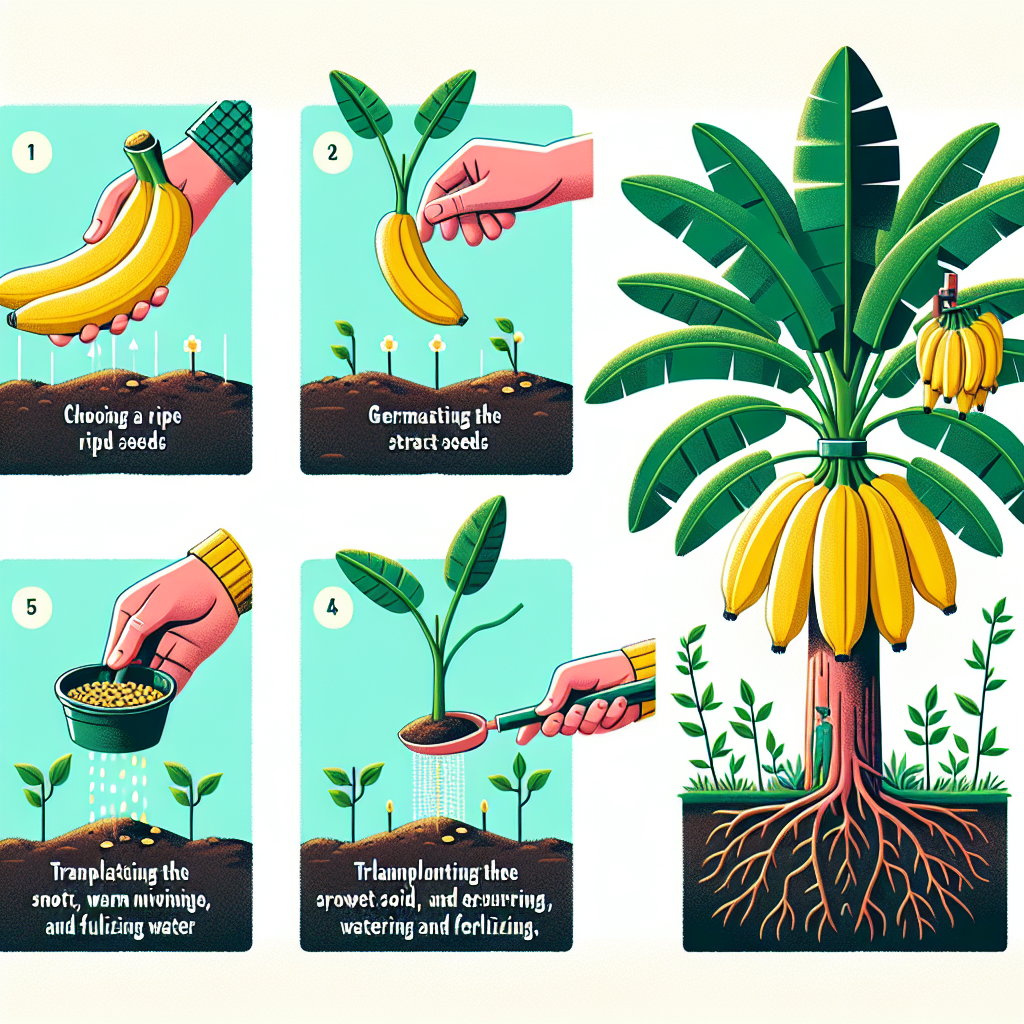
How do you grow a banana tree
How to Grow a Banana Tree: A Comprehensive Guide
Banana trees, known for their lush foliage and sweet fruits, are a fantastic addition to any garden. Growing a banana tree is not just rewarding; it’s also a fun experience that involves understanding the right conditions and care techniques. In this article, we will explore the best practices on how do you grow a banana tree, ensuring you get the best out of your gardening efforts.
Understanding Banana Trees
Before delving into the specifics of cultivation, it’s essential to understand what banana trees are. Contrary to popular belief, banana plants are technically herbaceous perennials, not trees. They can grow as high as 30 feet, depending on the variety and environmental conditions. The most common banana variety is the Cavendish, which you typically find in grocery stores. Additionally, there are many other varieties that can be grown ornamental or culinary purposes.
Choosing the Right Banana Variety
The first step in growing a banana tree is to select the right variety for your climate and space. Here’s a breakdown of some popular banana varieties:
- Cavendish: The most commercially cultivated variety, ideal for tropical climates.
- Red Banana: Known for their reddish-purple skin and sweet taste, these grow well in warm climates.
- Burro: Known for its distinctive flavor and shorter stature, suitable for smaller gardens.
- Dwarf Hawaiian: A compact variety that is perfect for container growing.
Best Growing Conditions
Banana trees thrive in warm and humid climates. Here are the ideal growing conditions:
- Temperature: Banana plants prefer temperatures between 80°F and 90°F (27°C - 32°C). They can tolerate temperatures as low as 50°F (10°C) but will not produce fruit under such conditions.
- Soil: Use well-draining soil rich in organic matter. Sandy loam is ideal with a pH of 5.5 to 7.0.
- Sunlight: Choose a location that receives full sun for at least six hours a day.
- Spacing: Allow ample space for your banana trees, ideally around 10-15 feet apart for optimal growth.
Planting Your Banana Tree
Once you have chosen your banana variety and prepared the right space, you're ready to plant. Here’s how:
"The best time to plant a banana tree is in the spring when the temperature is consistently warm."
Steps to Planting
- Select healthy banana suckers or corms from a reputable source.
- Dug a hole about 2-3 feet deep and wide.
- Place the banana corm or sucker in the hole, ensuring it is level with the surrounding soil.
- Backfill the hole with soil and water thoroughly.
- Apply a layer of mulch around the base to retain moisture and regulate soil temperature.
Caring for Your Banana Tree
Proper care is crucial for your banana tree’s development and fruit production. Here are the essential aspects of banana plant care:
- Watering: Banana trees require a lot of water, especially during dry periods. Water consistently to keep the soil moist but not soggy.
- Fertilization: Use a balanced fertilizer high in potassium and magnesium every month during the growing season.
- Pest Control: Keep an eye out for common pests like aphids and spider mites. Use insecticidal soap for treatment.
- Pruning: Regularly remove dead or damaged leaves to maintain health and promote growth.
Mulching and Weed Control
Mulching around your banana tree can help maintain soil moisture and suppress weeds. Here's how to effectively use mulch:
- Apply a 2-3 inch layer of organic mulch, such as straw or wood chips, around the base of the plant.
- Keep the mulch away from the trunk to prevent rot.
- Renew the mulch as it breaks down, maintaining consistent coverage throughout the growing season.
Harvesting Bananas
Once your banana tree is established and thriving, the exciting phase of harvesting will arrive! Bananas typically take about 9 to 12 months to grow after flowering. Below is a guide to harvest:
- Wait until bananas are plump and the fruit has turned from green to yellow for some varieties.
- Use a sharp knife to cut the entire bunch when ready.
- Hang the bananas in a cool, dark place to ripen fully. This helps enhance their flavor.
Common Issues When Growing Banana Trees
Like any plant, banana trees can face issues ranging from disease to pest infestations. Below are common problems and their solutions:
| Issue | Symptoms | Solutions |
|---|---|---|
| Yellowing Leaves | Leaves turn yellow from the tips down. | Check for water stress; adjust watering schedule. |
| Brown Spots | Discoloration on leaves. | Likely fungal infection; apply fungicide. |
| Pests | Presence of small insects on leaves. | Use insecticidal soap or neem oil for treatment. |
Overwintering Banana Trees
If you live in a cooler climate, overwintering your banana tree is essential to ensure its survival. Here are steps to properly overwinter:
- Cut back the leaves once they start to brown in fall.
- Mulch the base of the plant with straw or leaves to protect the roots.
- Consider bringing smaller plants indoors to a sunny space or greenhouse.
Conclusion
Growing a banana tree can be an enjoyable and fulfilling project for any gardener, whether you’re a beginner or a seasoned pro. By following the steps outlined in this guide and understanding the specific needs of your banana variety, you can successfully cultivate your own bananas. Remember that patience is key; it may take time before you see the fruits of your labor. Yet, knowing how do you grow a banana tree will undoubtedly enhance your gardening experience, making it all worthwhile!
Happy gardening, and may your banana trees flourish!
By Guest, Published on August 21st, 2024